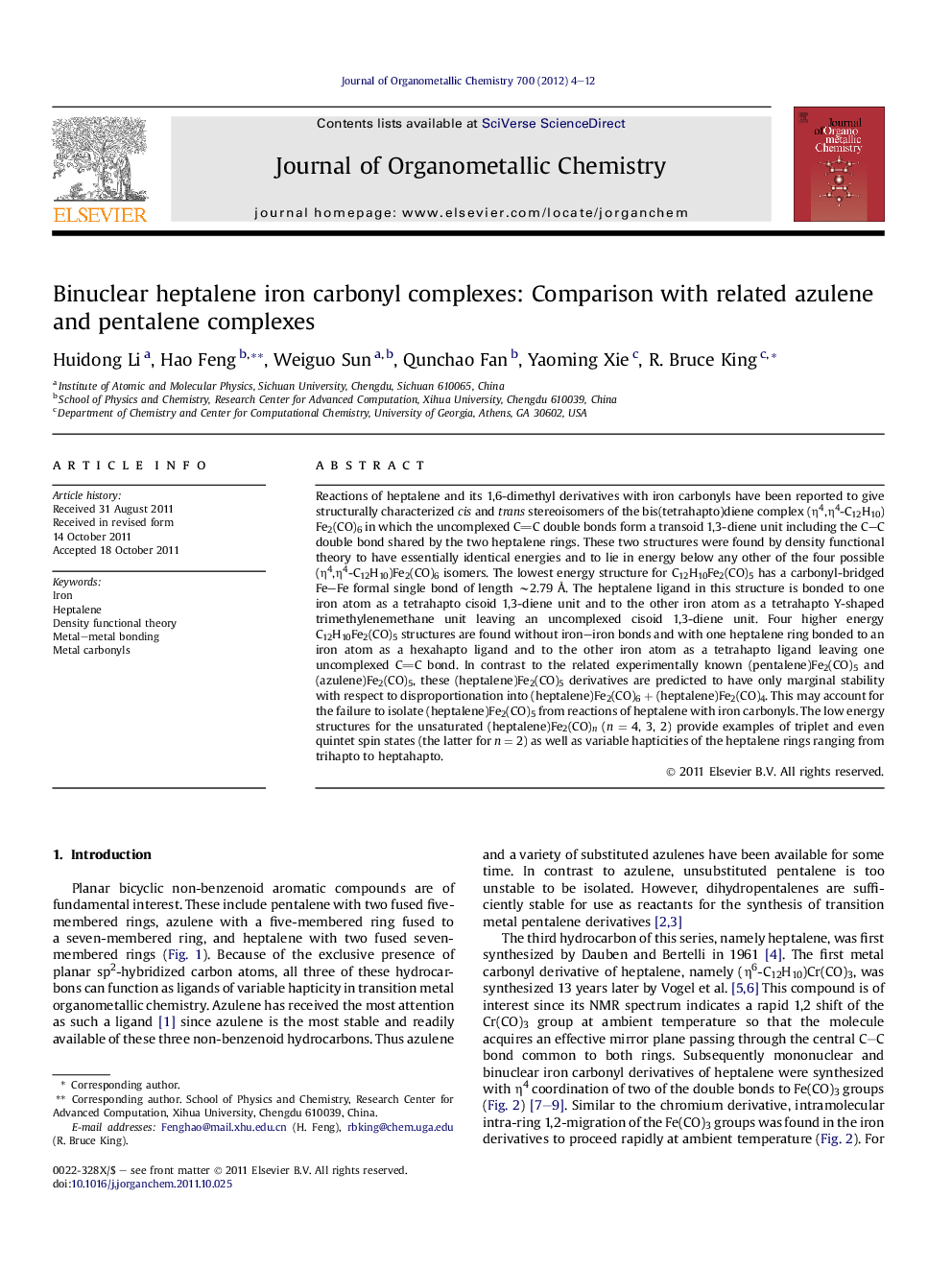| کد مقاله | کد نشریه | سال انتشار | مقاله انگلیسی | نسخه تمام متن |
|---|---|---|---|---|
| 1323496 | 1499935 | 2012 | 9 صفحه PDF | دانلود رایگان |

Reactions of heptalene and its 1,6-dimethyl derivatives with iron carbonyls have been reported to give structurally characterized cis and trans stereoisomers of the bis(tetrahapto)diene complex (η4,η4-C12H10)Fe2(CO)6 in which the uncomplexed CC double bonds form a transoid 1,3-diene unit including the C–C double bond shared by the two heptalene rings. These two structures were found by density functional theory to have essentially identical energies and to lie in energy below any other of the four possible (η4,η4-C12H10)Fe2(CO)6 isomers. The lowest energy structure for C12H10Fe2(CO)5 has a carbonyl-bridged Fe–Fe formal single bond of length ∼2.79 Å. The heptalene ligand in this structure is bonded to one iron atom as a tetrahapto cisoid 1,3-diene unit and to the other iron atom as a tetrahapto Y-shaped trimethylenemethane unit leaving an uncomplexed cisoid 1,3-diene unit. Four higher energy C12H10Fe2(CO)5 structures are found without iron–iron bonds and with one heptalene ring bonded to an iron atom as a hexahapto ligand and to the other iron atom as a tetrahapto ligand leaving one uncomplexed CC bond. In contrast to the related experimentally known (pentalene)Fe2(CO)5 and (azulene)Fe2(CO)5, these (heptalene)Fe2(CO)5 derivatives are predicted to have only marginal stability with respect to disproportionation into (heptalene)Fe2(CO)6 + (heptalene)Fe2(CO)4. This may account for the failure to isolate (heptalene)Fe2(CO)5 from reactions of heptalene with iron carbonyls. The low energy structures for the unsaturated (heptalene)Fe2(CO)n (n = 4, 3, 2) provide examples of triplet and even quintet spin states (the latter for n = 2) as well as variable hapticities of the heptalene rings ranging from trihapto to heptahapto.
Density functional theory finds that the two experimentally known (η4,η4-C12H10)Fe2(CO)6 structures to lie in energy below any of the other possible isomers. The lowest energy C12H10Fe2(CO)5 structure has an iron–iron bond, a bridging CO group, and the heptalene system bonded to one iron as a cis-1,3-diene ligand and to the other iron as a trimethylenemethane ligand.Figure optionsDownload as PowerPoint slideHighlights
► The two lowest energy (η4,η4-heptalene)Fe2(CO)6 structures are the experimentally known isomers.
► The lowest energy (heptalene)Fe2(CO)5 structure has an octahapto heptalene ligand and a carbonyl-bridged iron–iron bond.
► The low energy (heptalene)Fe2(CO)n (n = 4, 3, 2) structures provide examples of triplet and even quintet spin states.
Journal: Journal of Organometallic Chemistry - Volume 700, 1 March 2012, Pages 4–12